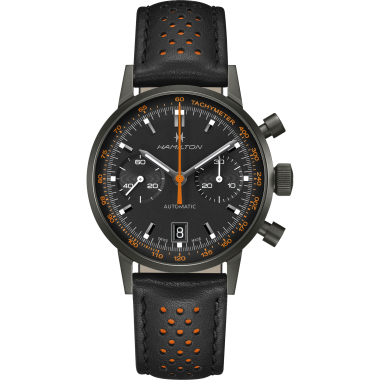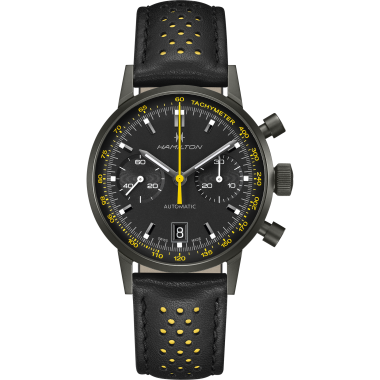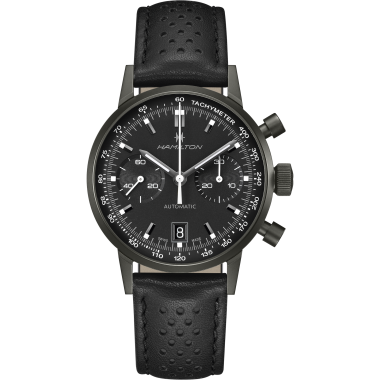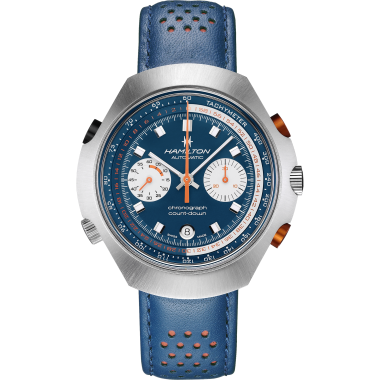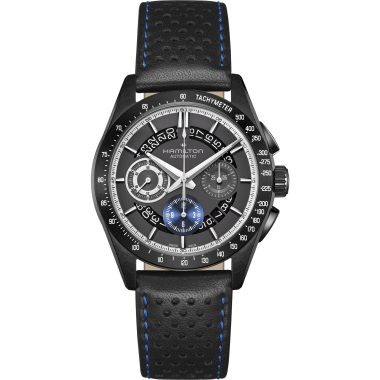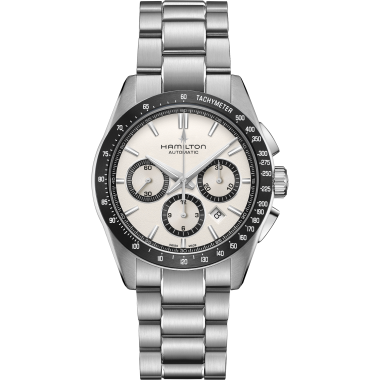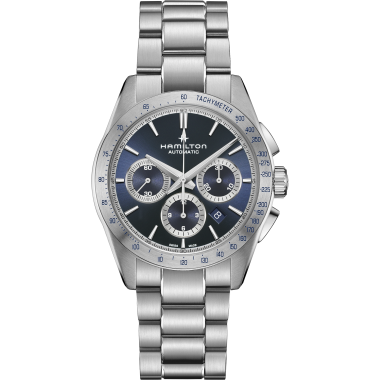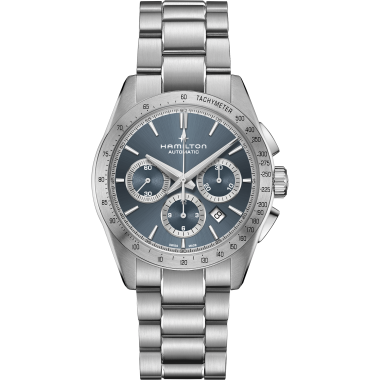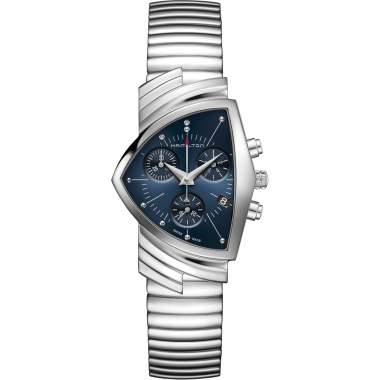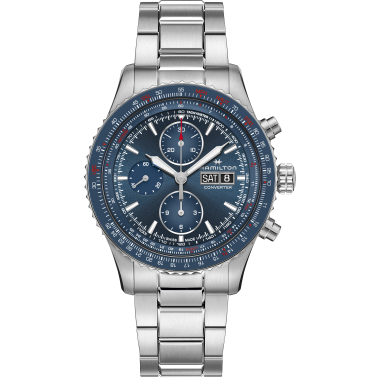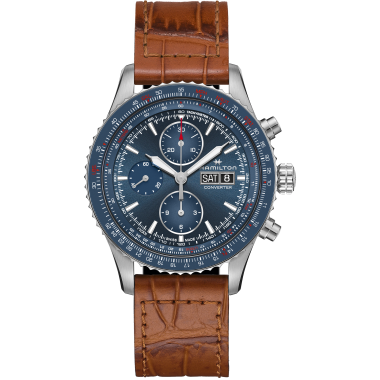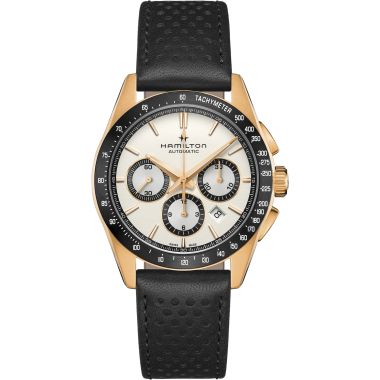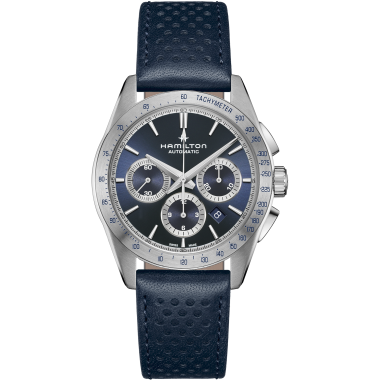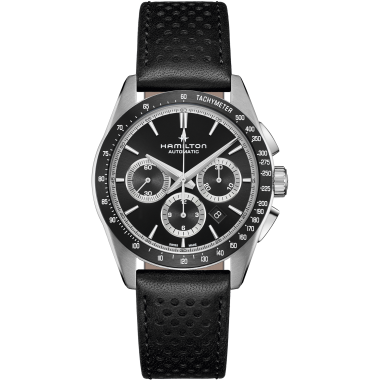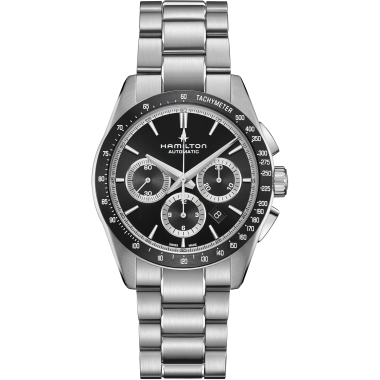WHAT IS A CHRONOGRAPH WATCH?
- JUNE 6, 2022 -
Did you know the definition of chronograph is time recorder? Therefore, we can infer that a chronograph watch is one with an added function that can measure time. How does it work? Pushers, sub dials and extra hands create a stopwatch. Ready to go from horology beginner to expert? Learn how to use a chronograph, as well as its history and utility, in this watch basics guide.
Let’s start with a chronograph watch definition: A chronograph watch is a timepiece with a mechanism built into the movement that can measure elapsed time without disrupting its basic time-telling functionality. Equipped with an independent sweep second hand and sub dials, a chronograph watch can be started, stopped and returned to zero using pushers placed above and below the crown.
What are sub dials?
The most common sub dials are found on chronograph watches and are sometimes referred to as ‘registers.’ Traditional chronograph watches feature three, which separately display the seconds, minutes or hours that elapse from the time you activate the stopwatch to when you stop it.
Both functions are initiated by pressing on the top pusher, usually located at 2 o’clock: Press the top pusher once to start the timer, and again to stop the clock. Then, you can read and record the measured time, all without interfering with the watch’s basic display. Ready to use your chronograph watch again? Just reset the chronograph function by pressing the lower pusher, usually located at 4 o’clock, and the stopwatch will reset to zero.
What is the point of a chronograph watch?
Only used for astronomy-related measurements, the first modern chronograph was invented in 1816, and only a few years later, the function was adapted to time horse races in France. From there, chronograph watches would become a trusted tool for pilots, racing drivers, divers, soldiers and doctors. Special complications were tailored to specific audiences. For example, the flyback mechanism, which allows the wearer to pause and restart the timer, was designed for military aviators.
Throughout the 19th century, all chronograph watches were mechanical movements, requiring the wearer to hand-wind the watch every few days. In the late 1960’s, Hamilton collaborated with other watch brands to create the first automatic chronograph movement, the Caliber 11. Our Intra-Matic Automatic Chronograph celebrates the technology and design of this game changing invention with signature style, while our Intra-Matic Chronograph H takes things back to basics with an engaging mechanical movement.
What else can a chronograph watch do?
Besides its basic stopwatch utility, many chronograph watches feature a tachymeter scale. Inscribed or printed on the bezel (the outer rim of an analog watch), the scale is used to convert elapsed time to rate. Essentially, giving you the ability to calculate speed and distance with a glance at the corresponding number. Watchmakers continue to innovate with new complication combinations and added functionality, creating true multi-tools appreciated for their practical utility and their careful design. Go hands-on with our video tutorials to learn more!
Do I need a chronograph watch?
Chronograph watches are popular for many reasons. Whether you enjoy the tactile manipulation of gears, the rich heritage or the general aesthetic, chronograph watches have much to offer as both a reliable tool and a stylish accessory.
Explore our precise and reliable chronograph watches today!

